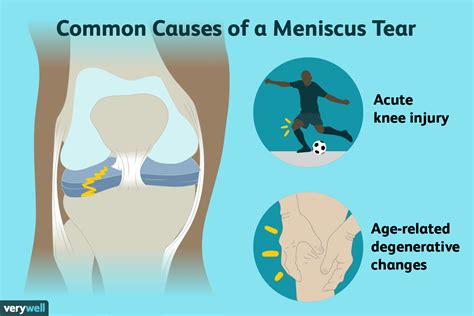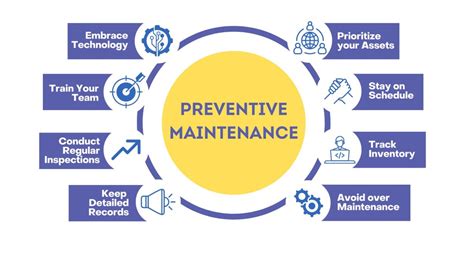Intro
Learn about meniscus knee injury, including causes, symptoms, and treatment options, to understand this common orthopedic condition affecting knee cartilage and meniscal tears, requiring medical attention and rehabilitation for recovery.
The meniscus is a crucial component of the knee joint, playing a vital role in maintaining its stability and facilitating smooth movement. A meniscus knee injury can be a debilitating condition, affecting not only athletes but also individuals who engage in regular physical activities. The importance of understanding this type of injury lies in its potential to cause long-term damage and compromise the overall health of the knee joint. As such, it is essential to delve into the world of meniscus knee injuries, exploring their causes, symptoms, diagnosis, and treatment options.
The knee joint is a complex structure, comprising bones, ligaments, tendons, and cartilage. The meniscus, a type of cartilage, is situated between the ends of the bones, acting as a cushion and absorbing shock. There are two menisci in each knee joint, the medial meniscus and the lateral meniscus, each with a unique function. The medial meniscus is more prone to injury due to its attachment to the medial collateral ligament, which can lead to increased stress and strain. On the other hand, the lateral meniscus is more mobile, allowing for greater flexibility and movement.
A meniscus knee injury can occur due to various reasons, including sudden twisting or bending, direct blows to the knee, or repetitive strain. Athletes who participate in sports that involve pivoting, cutting, or sudden changes of direction are more susceptible to meniscus injuries. Additionally, individuals with pre-existing knee conditions, such as osteoarthritis or ligament sprains, may be more prone to meniscus injuries. The symptoms of a meniscus knee injury can vary, but common indicators include pain, swelling, stiffness, and limited mobility. In some cases, a meniscus injury can cause a "locking" or "catching" sensation, where the knee joint becomes stuck or unable to move freely.
Understanding Meniscus Knee Injuries

Causes and Risk Factors
The causes and risk factors associated with meniscus knee injuries are multifaceted. Athletes who participate in high-impact sports, such as football, basketball, or soccer, are more susceptible to meniscus injuries. Additionally, individuals with pre-existing knee conditions, such as osteoarthritis or ligament sprains, may be more prone to meniscus injuries. Other risk factors include age, as meniscus injuries are more common in individuals over the age of 30, and obesity, which can put additional stress on the knee joint.Diagnosis and Treatment Options

Conservative Treatment Options
Conservative treatment options are often the first line of defense against meniscus knee injuries. RICE is a common treatment approach, which involves resting the affected knee, applying ice to reduce swelling, compressing the knee with a bandage or wrap, and elevating the knee above the level of the heart. Physical therapy can also help improve mobility, strength, and flexibility, while pain management medications can help alleviate discomfort and pain.Surgical Intervention

Rehabilitation and Recovery
Rehabilitation and recovery are crucial components of the treatment process for meniscus knee injuries. A comprehensive rehabilitation program can help improve mobility, strength, and flexibility, while reducing the risk of further injury. The rehabilitation process typically involves a combination of physical therapy, pain management, and gradual return to activity. It is essential to work with a healthcare professional to develop a personalized rehabilitation program that meets individual needs and goals.Prevention and Maintenance

Lifestyle Modifications
Lifestyle modifications can also play a significant role in preventing meniscus knee injuries. Avoiding high-impact activities, such as jumping or pivoting, can help reduce the stress and strain on the knee joint. Engaging in low-impact activities, such as cycling or swimming, can help maintain cardiovascular fitness while minimizing the risk of injury. Furthermore, incorporating strengthening exercises, such as squats and lunges, can help improve the stability and strength of the knee joint.Conclusion and Future Directions

We invite you to share your thoughts and experiences with meniscus knee injuries in the comments section below. Have you or someone you know suffered from a meniscus knee injury? What treatment options did you explore, and what were the outcomes? By sharing your stories and insights, we can work together to raise awareness and improve the management of meniscus knee injuries.
What are the common symptoms of a meniscus knee injury?
+The common symptoms of a meniscus knee injury include pain, swelling, stiffness, and limited mobility. In some cases, a meniscus injury can cause a "locking" or "catching" sensation, where the knee joint becomes stuck or unable to move freely.
How is a meniscus knee injury diagnosed?
+A meniscus knee injury is typically diagnosed through a combination of physical examination, medical history, and imaging tests, such as X-rays or MRI scans.
What are the treatment options for a meniscus knee injury?
+Treatment options for a meniscus knee injury vary depending on the severity and location of the injury. Conservative treatment options include rest, ice, compression, and elevation (RICE), as well as physical therapy and pain management. In more severe cases, surgical intervention may be necessary, such as arthroscopy or meniscectomy.
Can meniscus knee injuries be prevented?
+Yes, meniscus knee injuries can be prevented by maintaining a healthy weight, engaging in regular exercise, and improving flexibility and strength. Additionally, wearing proper protective gear, such as knee pads or sleeves, can help absorb shock and reduce the impact of falls or direct blows.
What is the prognosis for individuals with meniscus knee injuries?
+The prognosis for individuals with meniscus knee injuries varies depending on the severity and location of the injury, as well as the effectiveness of treatment. With proper treatment and rehabilitation, many individuals can make a full recovery and return to their normal activities. However, in some cases, meniscus knee injuries can lead to long-term damage and compromise the overall health of the knee joint.
